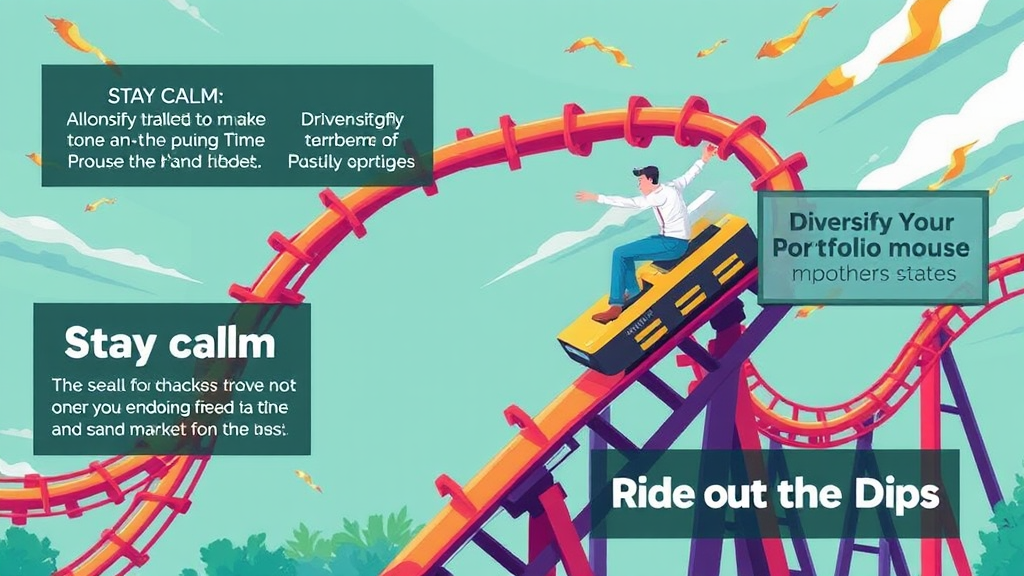Navigating the Stock Market Rollercoaster: Tips for Investors
What Causes Market Fluctuations?
Market fluctuations are primarily driven by supply and demand dynamics. When investors perceive potential gains, they buy more, increasing prices. Conversely, negative ness can trigger panic selling, leading to sharp declines. This cycle reflects human behavior and market psychology. Understanding these patterns is crucial. Investors must remain vigilant. Awareness is key in navigating volatility.
The Impact of Economic Indicators
Economic indicators significantly influence market trends. Key metrics include GDP growth, unemployment rates, and inflation. These factors provide insights into economic health. Investors analyze these indicators to make informed decisions. Understanding their implications is essential. Knowledge is power in investing.
Investment Strategies for Uncertain Times
Diversification: Spreading Your Risk
Diversification is a critical strategy for danger management. By allocating investments across various asset classes, investors can mitigate potential losses. This approach reduces exposure to any single investment. It’s a smart move. A balanced portfolio is essential for stability.
Long-Term vs. Short-Term Investing
Long-term investing focuses on capital appreciation over years. This strategy allows for compounding returns. In contrast, short-term investing seeks quick gains through market fluctuations. It requires active management and timing. Each approach has distinct risk profiles. Understanding these differences is crucial. Investors must choose wisely.
The Role of Technical Analysis
Reading Stock Charts Effectively
Reading stock charts effectively requires understanding key indicators. Price trends, volume, and moving averages are essential components. These elements help identify potential entry and exit points. Investors can make informed decisions. Mastering this skill is vital. Charts reveal market sentiment and momentum.
Identifying Trends and Patterns
Identifying trends and patterns is crucial in technical analysis. Recognizing these formations can indicate future price movements. Common patterns include head and shoulders, flags, and triangles. Each pattern has specific implications for traders. Understanding these signals enhances decision-making. Knowledge is essential for success.
Emotional Discipline in Investing
Recognizing Emotional Triggers
Recognizing emotional triggers is vital for successful investing. Fear and greed often drive irrational decisions. By identifying these triggers, investors can maintain discipline. This awareness helps mitigate impulsive actions. Emotional control leads to better outcomes. Staying calm is essential for success.
Strategies to Maintain Composure
Strategies to maintain composure include setting clear investment goals. This clarity helps reduce anxiety during market fluctuations. Additionally, developing a routine for reviewing investments can provide stability. Consistency is key. Practicing mindfulness techniques can also enhance emotional control. Staying focused is essential for success.
Utilizing Stop-Loss Orders
How Stop-Loss Orders Work
Stop-loss orders are essential risk management tools. They automatically sell a security when it reaches a specified price. This mechanism helps limit potential losses. Investors can set these orders based on their risk tolerance. It’s a prudent strategy. Understanding how to use them is crucial.
Setting Effective Stop-Loss Levels
Setting effective stop-loss levels requires careful analysis. Investors should consider volatility and support levels. Placing stop-loss orders too close can trigger unnecessary sales. This can lead to losses. A well-placed stop-loss protects capital. It’s a vital risk management strategy.
Staying Informed: Research and Resources
Key Financial News Sources
Key financial news sources include reputable publications and platforms. Bloomberg, Reuters, and The Wall Street Journal provide timely updates. These sources offer in-depth analysis and expert opinions. Staying informed is crucial for making sound investment decisions. Knowledge is power in finance. Regularly checking these outlets is advisable.
Utilizing Social Media and Online Communities
Utilizing social media and online communities can enhance investment knowledge. Platforms like Twitter and Reddit provide real-time insights. Engaging with experts and peers fosters informed discussions. He can gain diverse perspectives this way. Active participation is beneficial for learning. Staying connected is essential for success.
Learning from Past Market Crashes
Historical Examples of Market Downturns
Historical examples of market downturns provide valuable lessons. The Great Depression of 1929 led to widespread economic hardship. Similarly, the 2008 financial crisis exposed systemic vulnerabilities. Analyzing these events reveals patterns and investor behavior. Understanding these factors is crucial for future strategies. Knowledge from history can guide decisions.
Lessons Learned for Future Investments
Lessons learned from past market crashes emphasize the importance of diversification. Investors should avoid overexposure to any single asset. Additionally, maintaining liquidity can provide flexibility during downturns. Understanding market cycles is essential for strategic planning. Knowledge is crucial for informed decisions. History often repeats itself.
Integrating Cryptocurrency into Your Portfolio
Understanding the Crypto Market Landscape
Understanding the crypto market landscape is essential for investors. Cryptocurrencies exhibit high volatility and unique risks. Diversifying with digital assets can enhance portfolio performance. Investors should research various cryptocurrencies thoroughly. Knowledge is key to making informed choices. Staying updated on market trends is crucial.
Balancing Traditional and Digital Assets
Balancing traditional and digital assets is crucial for a well-rounded portfolio. Each asset class offers distinct benefits and risks. Traditional assets provide stability, while digital assets offer growth potential. Investors should assess their risk tolerance carefully. A diversified approach can mitigate volatility. Knowledge is essential for effective asset allocation.
